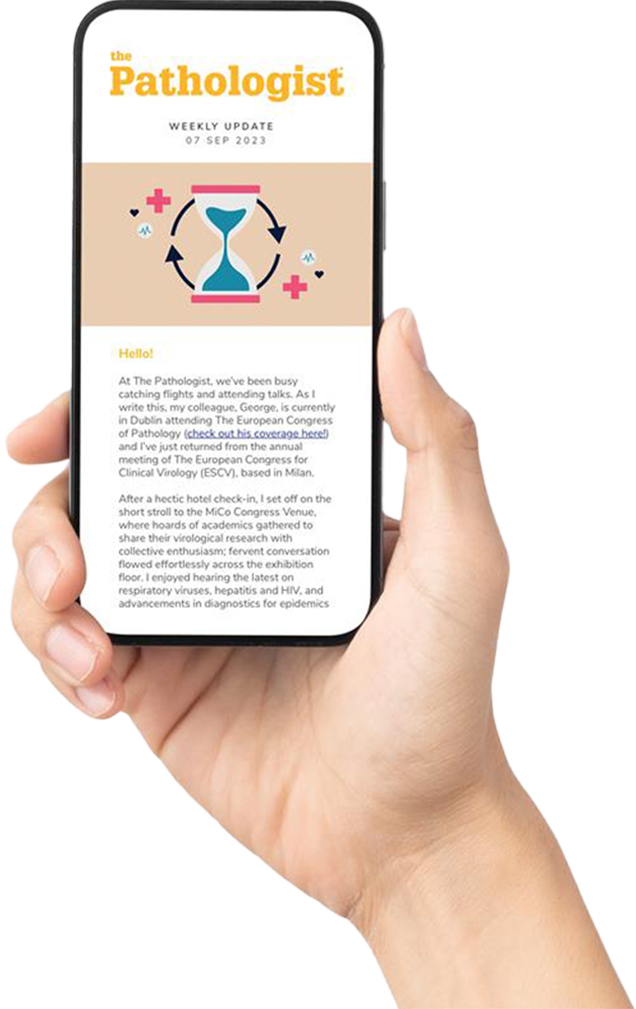Rapid immunohistochemistry using Fast Fluidic Technology (FFeX) enables precise and efficient advanced staining techniques, including monoplex and multiplex immunohistochemistry (IHC) and immunofluorescence (IF). Scanning by 3DHistech™ digital pathology solutions enables pathologists to evaluate and collaborate rapidly remotely and with transparency and consistency, thus improving the pathology workflow. Together, the LabSat® Research and Pannoramic Midi II demonstrate a rapid IHC and digital scanning solution.
Methods for IHC, IF, and multiplexing that deliver high quality stain results and maintain tissue morphology are important for effective tissue research. For example, IHC and IF have been identified as reliable methods that contribute to the study of the tumor microenvironment (TME) (Taube, et al 2020). In addition, technologies that offer high staining quality and morphology while improving workflow efficiencies may further enable the research of important biomarkers. This study highlights rapid IHC and multiplexing IF coupled with efficient and high quality scanning through 3DHistech systems.
Sample preparation
TMAs: Formalin fixed paraffin embedded (FFPE) tissue microarray slides were purchased from a commercial resource (Pantomics). Four micron sections of TMA tissues (breast cancers, known positive controls for estrogen receptor and progesterone receptor) were deparaffinized and rehydrated to deionized water following laboratory procedures. Tonsil sections: 4 micron thick sections were made from formalin fixed paraffin embedded tonsil tissues. The FFPE blocks were purchased from a commercial resource (BioIVT). Sections were allowed to air dry at ambient temperatures overnight and were deparaffinized and rehydrated to deionized water following laboratory procedures.
IHC staining
Heat induced epitope retrieval (HIER) of the TMA and tonsil sections was performed on the LabSat instrument using Epredia HIER Buffer L (pH 6) TA-135-HBL or HIER Buffer M (pH 8) TA-135-HBM. Antibodies used in the study included Ki67 (RM-9106-S) diluted 1:100 with Primary Antibody Diluent (TA-125-ADQ), Her2 (RM9103-S) diluted 1:100, by Epredia. The IHC detection kit system, UltraVision Quanto Detection System HRP / DAB (TA-125-QHD) was placed on the Lunaphore LabSat® instrument. Counterstain included Modified Mayer’s Hematoxylin (TA-125-MH). The IHC staining protocol on LabSat is located in Table 1, and requires a total of 34 minutes and 27 seconds for completion. The slides were removed from the Lunaphore LabSat® instrument, dehydrated through graded alcohols, mounted with a permanent mounting medium (Epredia Mounting Medium 4111) and allowed to air dry.
Multiplex IF staining
Heat induced epitope retrieval (HIER) of the TMA sections was performed on the LabSat® instrument using Epredia HIER Buffer L (pH 6) TA-135-HBL. The Cell IDx UltraPlex mxIF BC-1A Panel was utilized as the immunofluorescent cocktail multiplex stain. The antibodies in the panel are labeled with 490, 550, 650, and 750 nm fluorophores (Cell IDx 2020). The antibodies in the cocktail include estrogen receptor (ER), progesterone receptor (PR), Ki67, and Her2. The TMA sections were known positive controls for ER and PR, but negative for Her2. The multiplex IF (mIF) staining protocol on LabSat® is located in Table 2, and required a total of 47 minutes and 11 seconds for completion. The slides were removed from the Lunaphore LabSat® instrument, mounted with an aqueous mounting medium (PermaFluor, TA-006-FM) and allowed to air dry.
>> Download Application Note as a PDF
